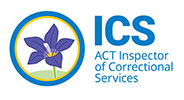FAQs
Can I make a complaint to the Inspector of Correctional Services?
No. The responsibility for dealing with general complaints rests with the Ombudsman and Official Visitors. Complaints about health, discrimination and disability matters are the responsibility of the ACT Human Rights Commission.
The Inspector of Correctional Services is interested in hearing about issues of a systemic nature that relate to correctional centers and services, and can be contacted via the details on the ‘Contact Us’ page.
Is the information I provide to the Inspector of Correctional Services kept confidential?
The Inspector of Correctional Services Act 2017 (ACT) contains confidentiality provisions that apply to information provided to the Inspector. Personal information may be accessed when undertaking inspections, and may be disclosed only in very limited circumstances defined in law
Personal information will be managed in accordance with the Information Privacy Act 2014 (ACT) and the Health Records Privacy and Access Act 1997 (ACT).
Who is the Inspector of Correctional Services?
Rebecca Minty is the ACT Inspector of Correctional Services.
What is the role of Inspector of Correctional Services?
The Inspector must conduct regular reviews of the Alexander Maconochie Centre (AMC), Bimberi Youth Justice Centre and correctional services provided to and for adult and young detained people.
The Inspector must also investigate “critical incidents” (as defined in the Inspector of Correctional Services Act 2017) that occur at the AMC, Bimberi and other places where adults and young people may be detained.
The Inspector is also expected to identify and review systemic issues that may emerge from a range of sources, including incidents at centres and concerns raised by stakeholders. The aim is to focus on prevention, rather than just be reactive to events after they have occurred.
Who does the Inspector report to?
The Inspector is independent of government. The Inspector reports only to the ACT Legislative Assembly.
Does the Inspector of Correctional Services cover Bimberi Youth Justice Centre?
Yes, the Inspector’s role expanded to cover Bimberi Youth Justice Centre in December 2019.
Does the Inspector have jurisdiction over persons accommodated at mental health or forensic disability facilities?
No, because these are not considered to be 'correctional centres' as defined in the Inspector of Correctional Services Act 2017.
What places of detention are covered by the Inspector of Correctional Services?
The Inspector of Correctional Services currently covers ‘correctional centres’ and ‘correctional services’ in the ACT. These include places where a person is detained under the Corrections Management Act 2007 (ACT), and may include:
- Alexander Maconochie Centre, including the Transitional Release Centre;
- Court Transport Unit including court cells and transport vehicles, operated by ACT Corrective Services;
- a place where a detained person is directed to work or participate in an activity;
- a health facility where a detained person is held in custody.
It also includes places where children and young people are held in custody, such as Bimberi Youth Justice Centre.
What inspection methodology is used for reviews?
All inspections of adult correctional and youth detention facilities are conducted against the Inspector of Correctional Services' ACT Standards for Adult Correctional Services or ACT Standards for Youth Detention Places. The Standards are based on international human rights standards, and cover matters considered essential to the safe, respectful and purposeful treatment of adults and young people detained in correctional and youth detention facilities.
The Standards specify the criteria for inspection. During an inspection, a number of sources of evidence are used to assess the custodial centre against the standards. These sources of evidence include individual interviews carried out with staff, detained people, survey results, group discussions with staff and detained people, documentation, and observation by inspectors.
Inspection reports are published in the ACT Legislative Assembly after an inspection is completed. Prior to publication of the report, custodial centre management and the responsible Minister are consulted with and invited to correct any factual inaccuracies within the report.
